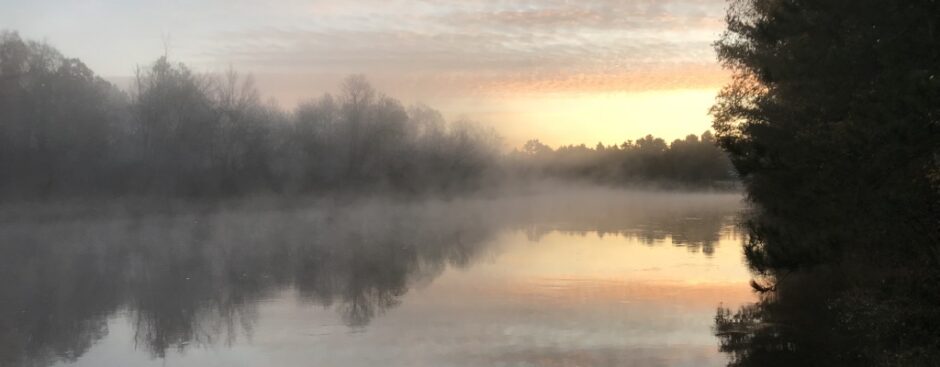
OK. Here’s a required disclosure. I first met Ms. Stonich when her debut novel, These Granite Islands was released on the heels of my debut novel, The Legacy. We were both invited to do readings and signings of our books at the Duluth Barnes and Noble. She had no idea who I was and likely had no idea I’d written a novel. So she didn’t attend my event at the local BN. I, on the other hand, read all about her and her first book in a very nice profile in the DNT, which prompted me to write an essay about writerly envy (mine!) in the Hermantown Star. Of course, I never thought she’d read an essay written in a suburban newspaper but, through a mutual friend, she did. Ms. Stonich emailed me a tongue-in-cheek response. I attended her event at BN. We became writerly friends. And remain such. There. Disclosure out of the way!
To the book. I thoroughly enjoyed the character of Meg in the first installment of the Laurentian Trilogy (Vacationland) and was pleased to see her “pop up” in this second novel set in the imaginary, northern Minnesota border town and tourist trap, Hatchet Inlet, a place that bears a mighty close resemblance to Ely, Minnesota. But before I dive deeper into why this book is a good read, I want to clear up a few small points of irritation I have with the book. All three criticisms are minor and have nothing to do with the characters, plot, or overall story.
First, Alpo, the main male protagonist, engages in trout fishing which given northeastern Minnesota (from Duluth up the North Shore) has a lot to choose from in terms of stream trout fishing, is a nice touch. But here’s my beef: the author has Alpo catching and releasing cutthroat trout. In NE Minnesota. While that point might seem to be a minor factoid, it isn’t to a trout fisherman (like me!). Minnesota has only two native trout species (and they are actually char, not true trout): lake trout, found in Lake Superior and some larger, deeper inland lakes; and brook trout, originally limited to Lake Superior and streams flowing into the big lake up to the first natural barrier in the streams. When Europeans arrived, brookies were planted by settlers and sportsmen in North Shore streams above the first natural barrier and in other creeks, streams, and rivers. The point is, Alpo would have been fishing for brookies, not cutthroat trout (or perhaps German Browns, or Rainbow trout, both which were introduced into some of NE Minnesota’s creeks, streams, and rivers by settlers and sportsmen). He would not be fishing cutthroat trout in NE Minnesota. (See https://www.dnr.state.mn.us/fish/trout/index.html).
My second minor critique regarding the natural world is this: Minnesota hasn’t had a verified, resident population of wolverines since the big pines and spruce were clear-cut in the early 1900s. Is it possible that a single, male wolverine looking for a mate (much like the reports of cougars in Minnesota) could wander into NE Minnesota from Ontario? Possible but never verified. (See https://bringmethenews.com/news/north-dakota-just-saw-its-first-confirmed-wolverine-in-a-long-time). A better choice would have been to have characters in the story talk about fishers, of which NE Minnesota has plenty of and which are a pretty awesome member of the weasel family in their own right. A minor point but one worth getting right in such a well-drawn story.
Finally, there’s a fleeting reference to a badger being involved with a dead body. NE Minnesota is the only area of the state where there are no resident badgers. I’ve lived a life in the woods in and around Duluth, including many trips to the BWCA and up the North Shore, fishing, camping, XC skiing, and hiking and have never, not a once, encountered a badger in my “neck of the woods” dead or alive. (See https://www.dnr.state.mn.us/mcvmagazine/issues/2016/may-jun/badgers.html). A better choice for a mammal of this type that does inhabit the forests of NE Minnesota would have been either a woodchuck or a porcupine. But enough with the petty.
Here’s the thing about Ms. Stonich’s writing. She is a master of character, making all of the folks populating her imaginary worlds seem fully formed and worth worrying over. This novel is no exception. From Alpo to Sissy to Louise to Pete to Rauri, these are people you come to care about. The only “villain” in the tale appears offstage (Rev. Peter: will we learn more about him in installment 3 of the series?). Even though the dementia-driven Louise seems hellish, she too is redeemed in the end. How that happens, I can’t say other than to hint that her final scenes are hectic, uproarious, and cinematic. There is also abundant conflict, internal and otherwise, sufficient to keep a reader interested in just what the hell is going on in little Hatchet Inlet. The pacing is spot on. The dialogue, evoking the speech patterns of the Finnish/Minnesotan brogue (and its frequent understatedness) is right on the money.
So don’t let my minor quibbling about a few isolated facts dissuade you from picking up this book. In a nutshell, what I said to my wife when I was halfway into the read stands as a solid testament: “Your book club should read this one. I think you’d really like it.” This isn’t a literary work like These Granite Islands. It’s not War and Peace. The novel was fashioned as entertainment, not enlightenment and that’s OK. But there’s also enough, in the author’s careful wordsmithing of characters, scenes, and plot to allow those whose noses tend to be a bit loftier to enjoy the story. My take is that Ms. Stonich has written a tale somewhere between Patty Jane’s House of Curls and the best of the Cork O’Connor whodunits. Any author who can channel Minnesota writers Lorna Landvik and William Kent Krueger in the same book deserves a read.
4 stars out of 5: A great book club selection.
Mark


